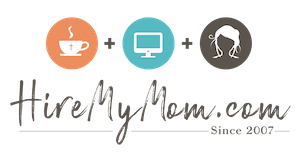New Hires Are Looking At Your Social Media Too

There have been countless news stories of companies going through the hiring process, interviewing a great candidate, then choosing not to go with them because of what is posted on their personal social media profiles. There are even stories about current employees going out for a fun night, posting it to their social media, and then promptly being let go from that company because the content of the social posts do not match the brand image the company wishes to portray.
This is certainly a controversial topic. From the employee point of view, many have voiced that they do not understand why something posted to their personal profiles, on their own time (not company time) makes any difference. Companies, on the other hand, are worried about employees who have connected themselves to the company on social media reflecting badly on the company’s image — whether in their personal life or professional life.
Although this is already a tricky topic, it is a two-way street. When a company interviews a potential candidate, those candidates are now looking at social profiles associated with the business. This includes both professional and personal.
For example, potential new hires are investigating company social profiles. They scroll through LinkedIn posts to see what the company stands for, and they check Facebook reviews to see how the company is treating customers. They also look up profiles for the CEO, the hiring managers, and anyone else listed on the company’s website or that they have come into contact with throughout the hiring process.
Remember, as much as you are interviewing a potential candidate, they are interviewing you. In today’s digital age, it is extremely easy to find people…and posts about them that may not reflect well on the company. Even if a person has their personal profile on extreme lockdown so that no one but close friends can see it, it is still possible to find things online they may not want to share.
For example, a person can take a screenshot of a professional headshot on the company’s website. They can upload this to Google or even specialty sites used to match images to social media profiles. With the click of a button, images that friends of friends of friends have posted can show up and lead a person down a rabbit hole of behavior outside, or maybe even inside, of company time.
That is why it is so important to monitor the company social media and provide guidelines to employees about what is expected of their conduct on social media. That is not to say that companies have complete control over their employee’s social media profiles. However, it is good to let people know what is expected of them, and why.
Social Media Guidelines
For company profiles, your internal teams should all work together to craft the messaging displayed to the public — which is good for both potential hires that are looking at the company as well as potential customers:
- Showcase current employees with testimonials and even video interviews of how they like the company and what their roles are. This allows customers to connect with the company by seeing real people work there, and it shows potential hires a glimpse into what working for your company is like.
- Share important information about company values. If your company is based on giving back to the community, share this information through educational posts that explain the mission and how the company is giving back.
- Customers also like to know that you are treating your employees well; post about the growth opportunities your company provides. For example, perhaps your company covers costs for marketers to get certain certificates such as HubSpot Marketing Certificates; potential hires like to see that the company supports employee growth and customers will appreciate that the company cares.
- Regularly conduct social media audits. Sometimes, things that were posted in the past “do not age well” as the kids say these days. It is okay to remove posts that do not align with the current company mission, or you can turn this into an opportunity to share how the company has changed its mindset and grown since that previous information was posted.
- Monitor customer reviews and respond promptly to resolve issues — additionally, interact with customers in general quickly and kindly. A potential hire does not want to look at your online reviews and find mostly negative reviews left behind by angry customers…especially if you are hiring for a customer service position!
- Be sure to have brand guidelines set up for employees that manage the company social media so they know how the company wishes to portray itself to the public.
And, keep in mind that CEO and other c-suite executives set the tone for their company with their own personal profiles. Leaders should all sit down together and discuss what type of information should be shared; after all, the CEO’s messaging should align with the company they are running. Otherwise, that is a red flag all around.
For employees, communicate the company’s values and policies regarding the company image and reputation. Let them know if the business considers their personal profiles important. Be upfront on what the company frowns upon when looking at social media. Again, companies should not try to control what their employees post, but an employee should also not be blind-sided if they post something the company deems inappropriate and not have been communicated about these values or stances in advance.
As aforementioned, this is a tricky and controversial topic. It is important that all parties are open to discussions and work together for mutual benefit and success.









